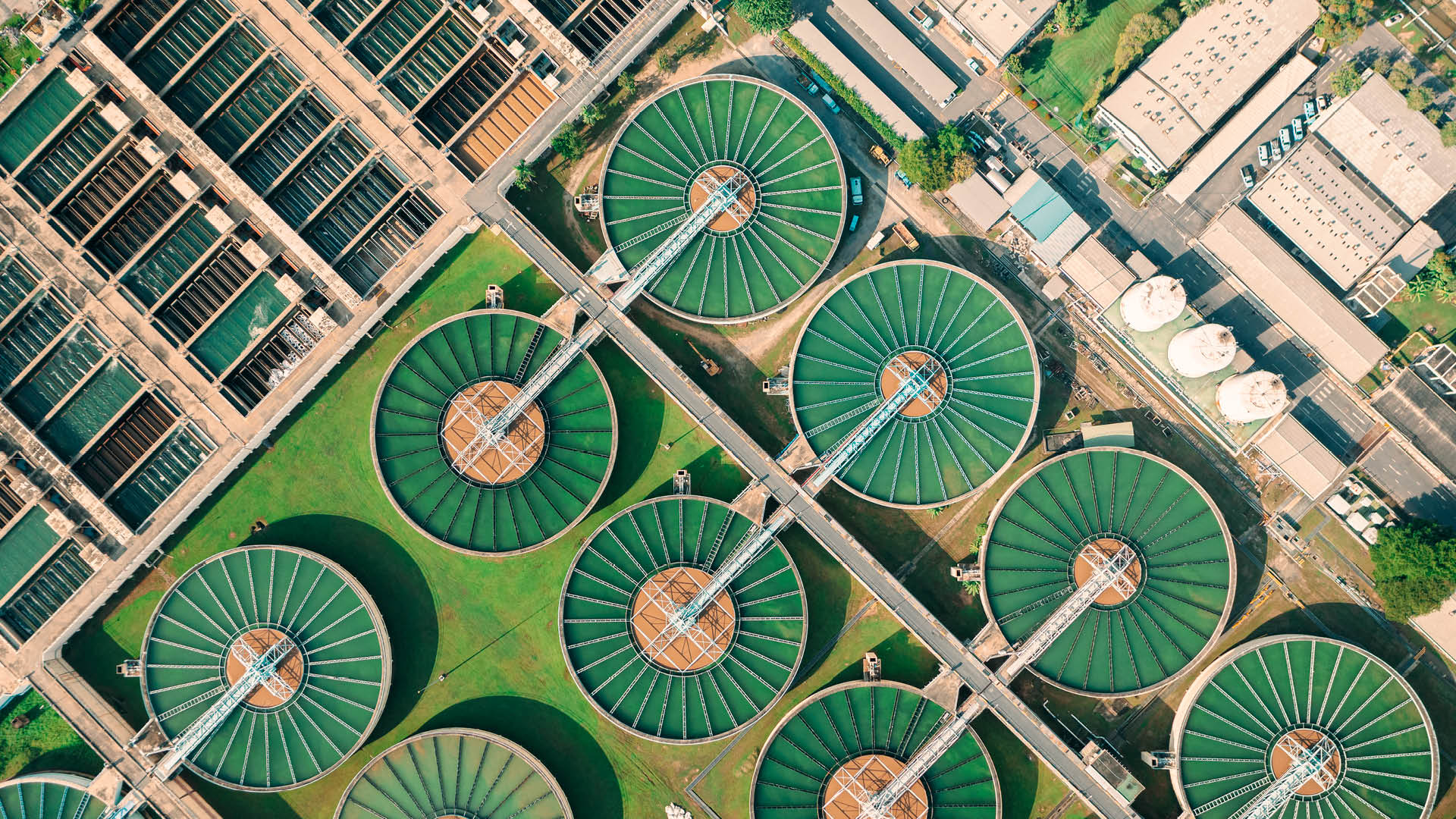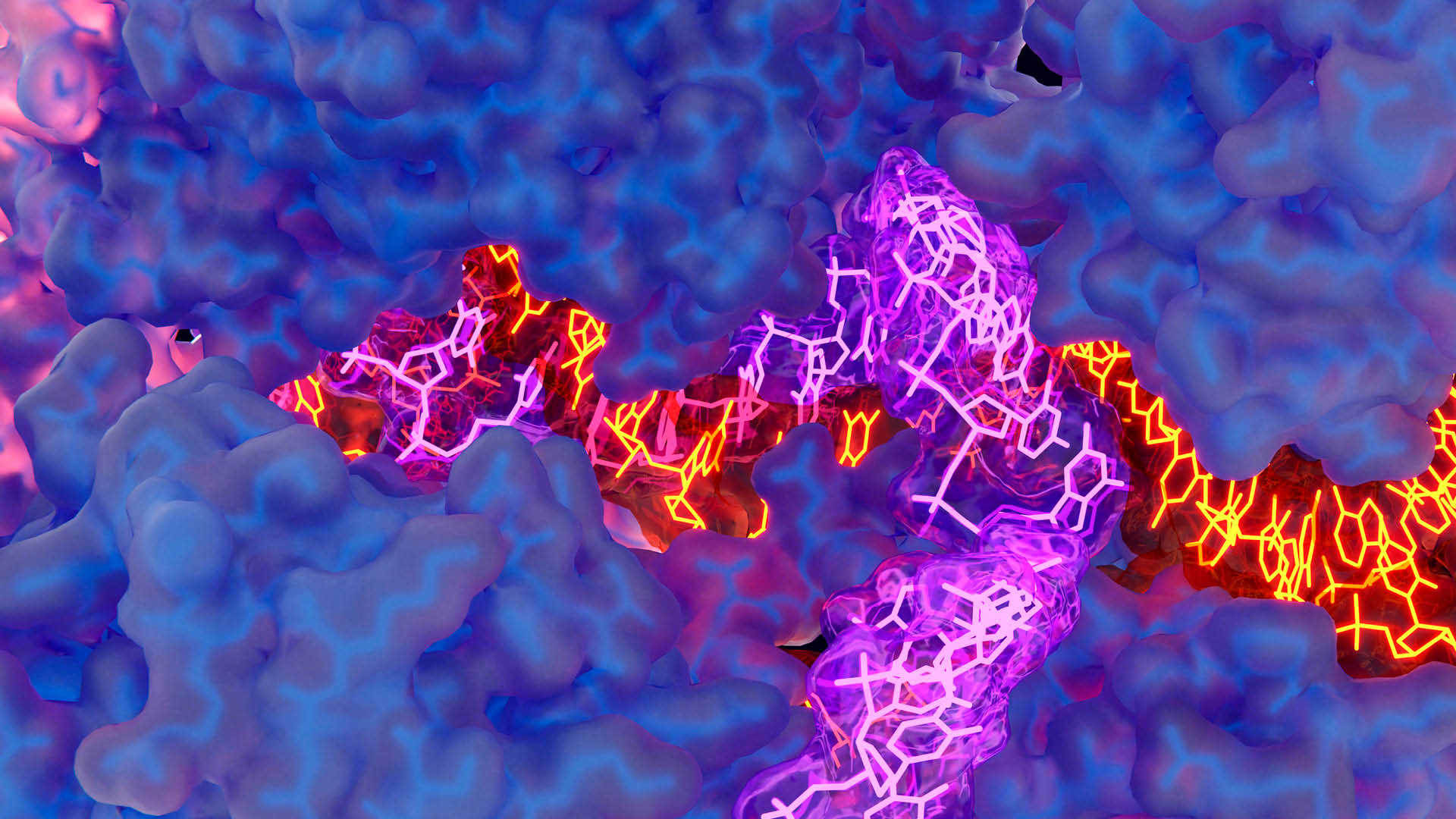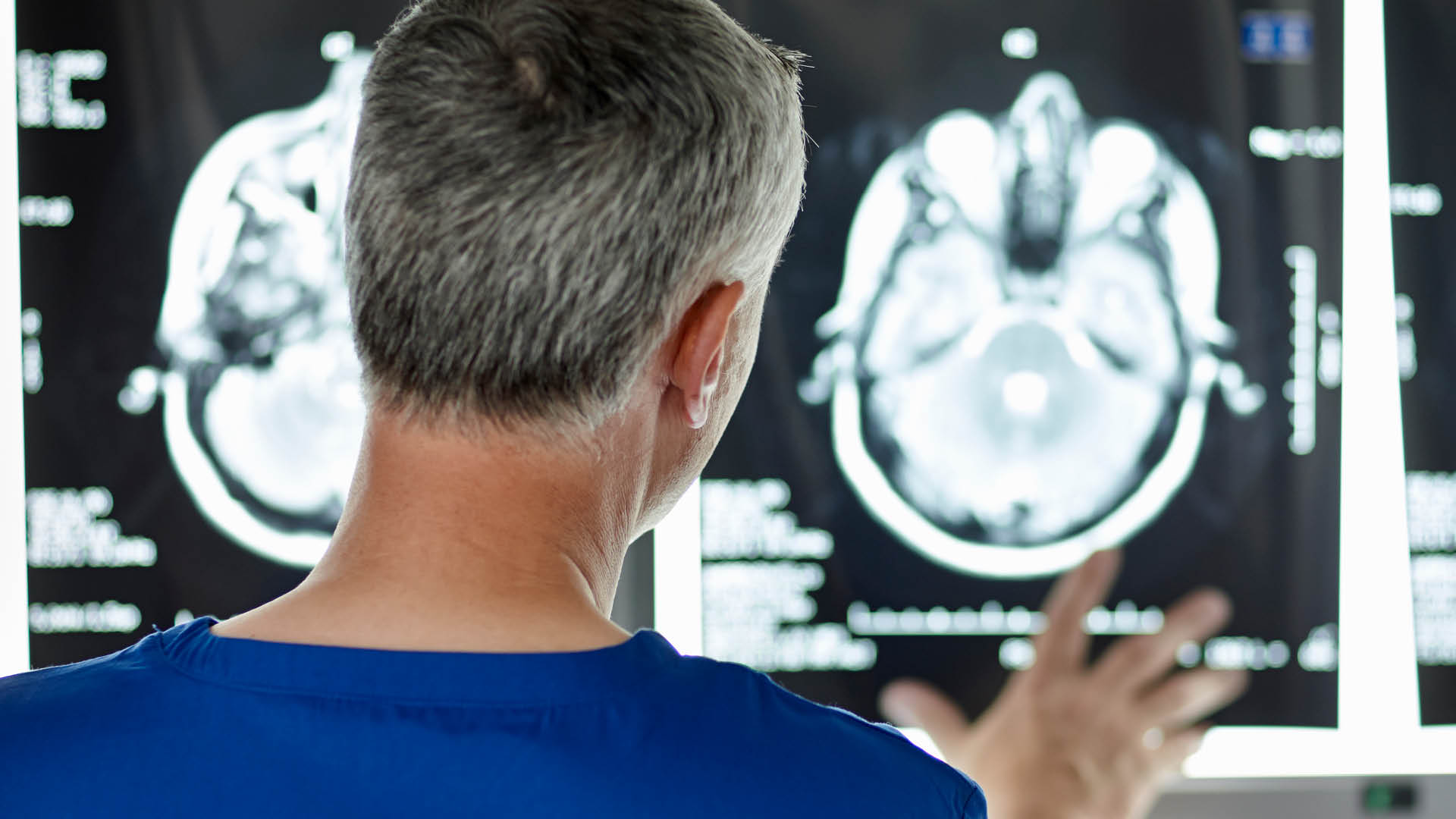Gain new perspectives for faster progress directly to your inbox.

Across disciplines and industries, scientific discoveries happen every day, so how can you stay ahead of emerging trends in a thriving landscape? At CAS, we have a unique view of recent scientific breakthroughs, the historical discoveries they were built upon, and the expertise to navigate the opportunities ahead. In 2023, we identified the top scientific breakthroughs, and 2024 has even more to offer. New trends to watch include the accelerated expansion of green chemistry, decarbonizing energy, the clinical validation of CRISPR, the rise of biomaterials, and the renewed progress in treating the undruggable, from cancer to neurodegenerative diseases. To hear what the experts from Lawrence Livermore National Lab, Oak Ridge National Lab, The Ohio State University, and CAS are saying on these topics, view the recorded webinar that revealed the top trends to watch in 2024.
Looking to stay ahead of emerging trends?
Subscribe to gain insight and identify the signal from the noise.
The ascension of AI in R&D

While the AI field has always been forward-looking, its revolution in chemistry and drug discovery has yet to be fully realized. While there have been some high-profile setbacks, several breakthroughs should be watched closely as the field evolves. Generative AI is impacting drug discovery, machine learning is being used more in environmental research, and large language models like ChatGPT are being tested in healthcare applications and clinical settings.
Many scientists are keeping an eye on AlphaFold, DeepMind’s protein structure prediction software that revolutionized how proteins are understood. DeepMind and Isomorphic Labs have recently announced how their latest model shows improved accuracy, can generate predictions for almost all molecules in the Protein Data Bank, and expand coverage to ligands, nucleic acids, and posttranslational modifications. Therapeutic antibody discovery driven by AI is also gaining popularity, and platforms such as the RubrYc Therapeutics antibody discovery engine will help advance research in this area.
Though many look at AI development excitedly, concerns over accurate and accessible training data, fairness and bias, lack of regulatory oversight, impact on academia, scholarly research and publishing, hallucinations in large language models, and even concerns over infodemic threats to public health are being discussed. However, continuous improvement is inevitable with AI, so expect to see many new developments and innovations throughout 2024.
‘Greener’ green chemistry

Green chemistry is a rapidly evolving field that is constantly seeking innovative ways to minimize the environmental impact of chemical processes. Here are several emerging trends that are seeing significant breakthroughs:
- Improving green chemistry predictions/outcomes: One of the biggest challenges in green chemistry is predicting the environmental impact of new chemicals and processes. Researchers are developing new computational tools and models that can help predict these impacts with greater accuracy. This will allow chemists to design safer and more environmentally friendly chemicals.
- Reducing plastics: More than 350 million tons of plastic waste are generated every year. Across the landscape of manufacturers, suppliers, and retailers, reducing the use of single-use plastics and microplastics is critical. New value-driven approaches by innovators like MiTerro that reuse industrial by-products and biomass waste for eco-friendly and cheaper plastic replacements will soon be industry expectations. Lowering costs and plastic footprints will be important throughout the entire supply chain.
- Alternative battery chemistry: In the battery and energy storage space, finding alternatives to scarce "endangered elements" like lithium and cobalt will be critical. While essential components of many batteries, they are becoming scarce and expensive. New investments in lithium iron phosphate (LFP) batteries that do not use nickel and cobalt have expanded, with 45% of the EV market share being projected for LFP in 2029. Continued research is projected for more development in alternative materials like sodium, iron, and magnesium, which are more abundant, less expensive, and more sustainable.
- More sustainable catalysts: Catalysts speed up a chemical reaction or decrease the energy required without getting consumed. Noble metals are excellent catalysts; however, they are expensive and their mining causes environmental damage. Even non-noble metal catalysts can also be toxic due to contamination and challenges with their disposal. Sustainable catalysts are made of earth-abundant elements that are also non-toxic in nature. In recent years, there has been a growing focus on developing sustainable catalysts that are more environmentally friendly and less reliant on precious metals. New developments with catalysts, their roles, and environmental impact will drive meaningful progress in reducing carbon footprints.
- Recycling lithium-ion batteries: Lithium-ion recycling has seen increased investments with more than 800 patents already published in 2023. The use of solid electrolytes or liquid nonflammable electrolytes may improve the safety and durability of LIBs and reduce their material use. Finally, a method to manufacture electrodes without solvents could reduce the use of deprecated solvents such as N-methylpyrrolidinone, which require recycling and careful handling to prevent emissions.
Rise of biomaterials

New materials for biomedical applications could revolutionize many healthcare segments in 2024. One example is bioelectronic materials, which form interfaces between electronic devices and the human body, such as the brain-computer interface system being developed by Neuralink. This system, which uses a network of biocompatible electrodes implanted directly in the brain, was given FDA approval to begin human trials in 2023.
- Bioelectronic materials: are often hybrids or composites, incorporating nanoscale materials, highly engineered conductive polymers, and bioresorbable substances. Recently developed devices can be implanted, used temporarily, and then safely reabsorbed by the body without the need for removal. This has been demonstrated by a fully bioresorbable, combined sensor-wireless power receiver made from zinc and the biodegradable polymer, poly(lactic acid).
- Natural biomaterials: that are biocompatible and naturally derived (such as chitosan, cellulose nanomaterials, and silk) are used to make advanced multifunctional biomaterials in 2023. For example, they designed an injectable hydrogel brain implant for treating Parkinson’s disease, which is based on reversible crosslinks formed between chitosan, tannic acid, and gold nanoparticles.
- Bioinks: are used for 3D printing of organs and transplant development which could revolutionize patient care. Currently, models are used for studying organ architecture like 3D-printed heart models for cardiac disorders and 3D-printed lung models to test the efficacy of drugs. Specialized bioinks enhance the quality, efficacy, and versatility of 3D-printed organs, structures, and outcomes. Finally, new approaches like volumetric additive manufacturing (VAM) of pristine silk-based bioinks are unlocking new frontiers of innovation for 3D printing.
To the moon and beyond

The global Artemis program is a NASA-led international space exploration program that aims to land the first woman and the first person of color on the Moon by 2025 as part of the long-term goal of establishing a sustainable human presence on the Moon. Additionally, the NASA mission called Europa Clipper, scheduled for a 2024 launch, will orbit around Jupiter and fly by Europa, one of Jupiter’s moons, to study the presence of water and its habitability. China’s mission, Chang’e 6, plans to bring samples from the moon back to Earth for further studies. The Martian Moons Exploration (MMX) mission by Japan’s JAXA plans to bring back samples from Phobos, one of the Mars moons. Boeing is also expected to do a test flight of its reusable space capsule Starliner, which can take people to low-earth orbit.
The R&D impact of Artemis extends to more fields than just aerospace engineering, though:
- Robotics: Robots will play a critical role in the Artemis program, performing many tasks, such as collecting samples, building infrastructure, and conducting scientific research. This will drive the development of new robotic technologies, including autonomous systems and dexterous manipulators.
- Space medicine: The Artemis program will require the development of new technologies to protect astronauts from the hazards of space travel, such as radiation exposure and microgravity. This will include scientific discoveries in medical diagnostics, therapeutics, and countermeasures.
- Earth science: The Artemis program will provide a unique opportunity to study the Moon and its environment. This will lead to new insights into the Earth's history, geology, and climate.
- Materials science: The extreme space environment will require new materials that are lightweight, durable, and radiation resistant. This will have applications in many industries, including aerospace, construction, and energy.
- Information technology: The Artemis program will generate a massive amount of data, which will need to be processed, analyzed, and shared in real time. This will drive the development of new IT technologies, such as cloud computing, artificial intelligence, and machine learning.
The CRISPR pay-off

After years of research, setbacks, and minimal progress, the first formal evidence of CRISPR as a therapeutic platform technology in the clinic was realized. Intellia Therapeutics received FDA clearance to initiate a pivotal phase 3 trial of a new drug for the treatment of hATTR, and using the same Cas9 mRNA, got a new medicine treating a different disease, angioedema. This was achieved by only changing 20 nucleotides of the guide RNA, suggesting that CRISPR can be used as a therapeutic platform technology in the clinic.
The second great moment for CRISPR drug development technology came when Vertex and CRISPR Therapeutics announced the authorization of the first CRISPR/Cas9 gene-edited therapy, CASGEVY™, by the United Kingdom MHRA, for the treatment of sickle cell disease and transfusion-dependent beta-thalassemia. This was the first approval of a CRISPR-based therapy for human use and is a landmark moment in realizing the potential of CRISPR to improve human health.
In addition to its remarkable genome editing capability, the CRISPR-Cas system has proven to be effective in many applications, including early cancer diagnosis. CRISPR-based genome and transcriptome engineering and CRISPR-Cas12a and CRISPR-Cas13a appear to have the necessary characteristics to be robust detection tools for cancer therapy and diagnostics. CRISPR-Cas-based biosensing system gives rise to a new era for precise diagnoses of early-stage cancers.
MIT engineers have also designed a new nanoparticle DNA-encoded nanosensor for urinary biomarkers that could enable early cancer diagnoses with a simple urine test. The sensors, which can detect cancerous proteins, could also distinguish the type of tumor or how it responds to treatment.
Ending cancer

The immuno-oncology field has seen tremendous growth in the last few years. Approved products such as cytokines, vaccines, tumor-directed monoclonal antibodies, and immune checkpoint blockers continue to grow in market size. Novel therapies like TAC01-HER2 are currently undergoing clinical trials. This unique therapy uses autologous T cells, which have been genetically engineered to incorporate T cell Antigen Coupler (TAC) receptors that recognize human epidermal growth factor receptor 2 (HER2) presence on tumor cells to remove them. This could be a promising therapy for metastatic, HER2-positive solid tumors.
Another promising strategy aims to use the CAR-T cells against solid tumors in conjunction with a vaccine that boosts immune response. Immune boosting helps the body create more host T cells that can target other tumor antigens that CAR-T cells cannot kill.
Another notable trend is the development of improved and effective personalized therapies. For instance, a recently developed personalized RNA neoantigen vaccine, based on uridine mRNA–lipoplex nanoparticles, was found effective against pancreatic ductal adenocarcinoma (PDAC). Major challenges in immuno-oncology are therapy resistance, lack of predictable biomarkers, and tumor heterogenicity. As a result, devising novel treatment strategies could be a future research focus.
Decarbonizing energy

Multiple well-funded efforts are underway to decarbonize energy production by replacing fossil fuel-based energy sources with sources that generate no (or much less) CO2 in 2024.
One of these efforts is to incorporate large-scale energy storage devices into the existing power grid. These are an important part of enabling the use of renewable sources since they provide additional supply and demand for electricity to complement renewable sources. Several types of grid-scale storage that vary in the amount of energy they can store and how quickly they can discharge it into the grid are under development. Some are physical (flywheels, pumped hydro, and compressed air) and some are chemical (traditional batteries, flow batteries, supercapacitors, and hydrogen), Solutions in the latter category will continue to be the subject of active chemistry and materials development research in 2024. The U.S. government is encouraging development in this area through tax credits as part of the Inflation Reduction Act and a $7 billion program to establish regional hydrogen hubs.
Meanwhile, nuclear power will continue to be an active R&D area in 2024. In nuclear fission, multiple companies are developing small modular reactors (SMRs) for use in electricity production and chemical manufacturing, including hydrogen. The development of nuclear fusion reactors involves fundamental research in physics and materials science. One major challenge is finding a material that can be used for the wall of the reactor facing the fusion plasma; so far, candidate materials have included high-entropy alloys and even molten metals.
Neurodegenerative diseases

Neurodegenerative diseases are a major public health concern, being a leading cause of death and disability worldwide. While there is currently no cure for any neurodegenerative disease, new scientific discoveries and understandings of these pathways may be the key to helping patient outcomes.
- Alzheimer’s disease: Two immunotherapeutics have received FDA approval to reduce both cognitive and functional decline in individuals living with early Alzheimer's disease. Aducannumab (Aduhelm®) received accelerated approval in 2021 and is the first new treatment approved for Alzheimer’s since 2003 and the first therapy targeting the disease pathophysiology, reducing beta-amyloid plaques in the brains of early Alzheimer’s disease patients. Lecanemab (Leqembi®) received traditional approval in 2023 and is the first drug targeting Alzheimer’s disease pathophysiology to show clinical benefits, reducing the rate of disease progression and slowing cognitive and functional decline in adults with early stages of the disease.
- Parkinson’s disease: New treatment modalities outside of pharmaceuticals and deep brain stimulation are being researched and approved by the FDA for the treatment of Parkinson’s disease symptoms. The non-invasive medical device, Exablate Neuro (approved by the FDA in 2021), uses focused ultrasound on one side of the brain to provide relief from severe symptoms such as tremors, limb rigidity, and dyskinesia. 2023 brought major news for Parkinson’s disease research with the validation of the biomarker alpha-synuclein. Researchers have developed a tool called the α-synuclein seeding amplification assay which detects the biomarker in the spinal fluid of people diagnosed with Parkinson’s disease and individuals who have not shown clinical symptoms.
- Amyotrophic lateral sclerosis (ALS): Two pharmaceuticals have seen FDA approval in the past two years to slow disease progression in individuals with ALS. Relyvrio® was approved in 2022 and acts by preventing or slowing more neuron cell death in patients with ALS. Tofersen (Qalsody®), an antisense oligonucleotide, was approved in 2023 under the accelerated approval pathway. Tofersen targets RNA produced from mutated superoxide dismutase 1 (SOD1) genes to eliminate toxic SOD1 protein production. Recently published genetic research on how mutations contribute to ALS is ongoing with researchers recently discovering how NEK1 gene mutations lead to ALS. This discovery suggests a possible rational therapeutic approach to stabilizing microtubules in ALS patients.



